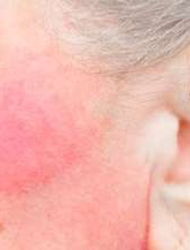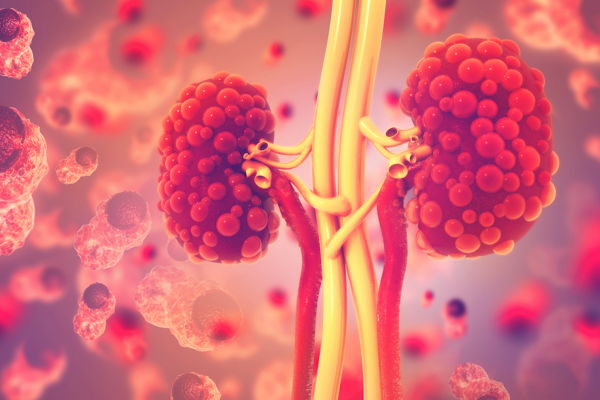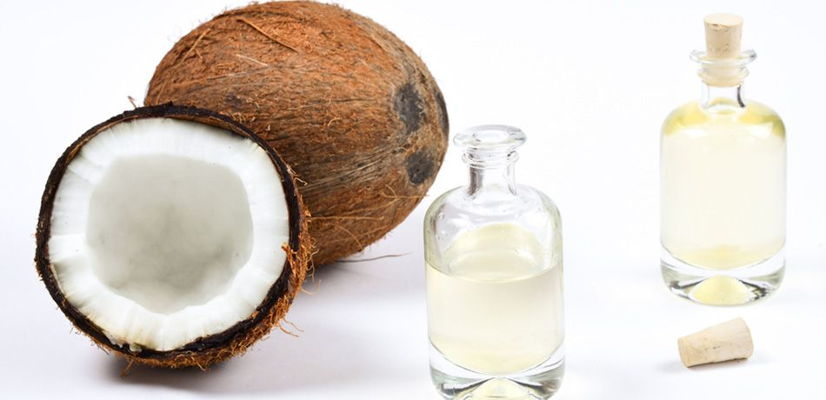11 Facts About Psoriasis and How to Cope with It
Thursday September 6, 2018 by Marianne Gutierrez 1,395 words
1. What Causes Psoriasis?
Biochemical distress (damaged tissue, pathogens, sores and cuts) send signals to specialised cells and proteins to seal off the injured area, destroy damaged tissue and to kill the pathogens. This is the inflammatory response.
When inflammation is chronic in auto-immune disease, it is thought to be due to the natural anti-inflammatory mediators being blocked by C5a a pro-inflammatory protein which prevents elements from attacking the pathogens. Cathelicidin is a healing peptide that is blocked especially if there is a lack of vitamin D which releases it.
This may be the cause of psoriasis. The exact cause is unknown, and while genes may play a part in psoriasis, only one in three patients report a relative with the condition.
According to the National Psoriasis Foundation, an estimated 10 percent of people inherit the genes that increase their likelihood of getting psoriasis
Scientists believe that at least 10 percent of people inherit one or more of the genes that could eventually lead to psoriasis. However, only 2 percent to 3 percent of the population develops the disease. Researchers believe that for a person to develop psoriasis, that person must have a combination of the genes that cause psoriasis and be exposed to specific external factors known as “triggers.”
Designua / shutterstock.com
2. Symptoms of Psoriasis
Psoriasis symptoms may include sore, dry raised patches of skin with silvery white skin cells that flake off, as well as areas of red around the patch that may itch, burn, crack and bleed. Psoriatic arthritis symptoms includes thick, pitted nails and painful swollen joints.
MK photograp55 / shutterstock.com
3. Different Types of Psoriasis
Psoriasis affects people differently, but five distinct types have been identified. The most common is plaque psoriasis and is seen as raised, red patches covered in a silvery build-up of dead skin, usually found on elbows, knees, scalp and lower back. These patches can be itchy and are prone to cracking and bleeding.
A potentially dangerous type of psoriasis is called erythrodermic psoriasis, which covers the full surface of the skin with an inflamed rash. It can be accompanied by pustular psoriasis, which is a rare condition where the skin is red and painful with little pus-filled bumps. Other more unusual types are guttate psoriasis — small light red bumps on the skin and fine dead skin cells on top, and inverse psoriasis, which appears in the skin folds. Some patients with psoriasis may also go on to develop psoriatic arthritis.
Artemdia-psy / shutterstock.com
4. Medical Treatments
Medical treatment aims to stop the skin cells from growing so quickly and to remove scales, as well. Topical ointments, moisturizers, and medications can offer relief to the patient, as well as Hippocrates’ tar in the form of coal tar. Also corticosteroids, Vitamin D analogues (Vitamin D3 plus Vitamin D2), Anthralin, topical retinoids (Vitamin A), calcineurin inhibitors, and salicylic acid.
designer491 / shutterstock.com
5. Understanding Digestion and Food Intolerance
Disease is the body telling us that something is wrong. Just as pain tells us that something is wrong. Psoriasis is no exception, there is something seriously wrong with the skin. For the body to be healthy we need nutrition. Getting the nutrients to the vital areas including the skin can be the problem. It is thought that psoriasis can be helped when digestion is improved.
Digestion begins when our brain recognizes the smells of food and triggers digestive juices (enzymes and minerals) to flow, to eventually the completely broken down food being received by the small intestine. The small villi allow the nutrients to pass into the blood stream. These precious nutrients, fully digested and recognized as such, can be utilized by every cell so that the bodily functions of growth, repair and elimination can take place. As the food travels through all the digestive processes, anything can go wrong, from not enough enzymes to poor digestion in the small intestines.
A big part of poor digestion is caused by an intolerance to a food. The cause of intolerance is a subject for another time but involves the immune system.
For psoriasis sufferers avoiding certain foods that may be upsetting the gut would be good advice. Gluten is thought to trigger psoriasis. Gluten can cause the small intestine to malfunction so that nutrients do not pass through to the blood stream.
New research estimates that up to 25 percent of people who have psoriasis also may be sensitive to gluten. However, not everyone with symptoms tests positive to gluten intolerance. Some suffer with wheat and non-celiac symptoms and still have to remove those foods from their diet.
A food intolerance is difficulty digesting certain foods and having an unpleasant physical reaction to them. It causes symptoms, such as bloating and stomach pain, which usually come on a few hours after consuming the food.
Vecton / shutterstock.com
6. Good News for All Skin Conditions, Including Psoriasis
Skin problems are a sign that the nutrients the skin needs for elasticity and health are not getting into the blood through digestion. This can be due to either the gut being diseased or because the nutrients are not included in the diet.
There is now new hope in the form of supplementing high-doses of cod liver oil, which is rich in Vitamin A and Vitamin D — both of which the skin must have to be healthy. Cod liver oil trials have consistently shown a reduction in symptoms of skin conditions from eczema to psoriasis, and it can be either ingested or rubbed into the skin to achieve its benefits.
Africa Studio / shutterstock.com
7. Alternative Treatments
There are an abundance of herbs and fats that are recommended to help psoriasis, from aloe vera and shea butter, to olive oil, black seed oil, and turmeric. These items can calm and reduce the inflammation and dead skin.
Apple cider vinegar can also help the itchiness that goes along with psoriasis, and tea-tree oil works well as an antiseptic and analgesic. While these products may help for a short while and will stop psoriasis from getting worse temporarily, there are no definitive reports that they cure the psoriasis.
areeya_ann / shutterstock.com
8. Avoid Foods That Cause Inflammation
Vegetable oils, refined vegetable fats, hydrogenated vegetable fats, margarines, low fat spreads, vegetable suets, refined flours, unfermented grains, sugar, sodium in preserved meats, and soya can all cause inflammation. The manufacturing and processing of all tinned, dried, bottled and frozen foods can also affect the body and become a psoriasis trigger.
Warren Price Photography / shutterstock.com
9. Nutrient Rich Diet
To help the skin condition, there are certain foods that should be consumed, including grass-fed meat and animal fats, fish, bone broths, liver, organic tomato puree, raw organic whole milk and cheese, and red, orange and yellow vegetables and fruits. These food items will help the gut flora and carotene that converts to vitamin A and stored in the liver.
5-8 glasses of mineral rich water is the only liquid recommended to consume, and those with psoriasis should limit their intake of tea and coffee to one or two a day, and avoid fruit juices and sodas entirely.
MaraZe / shutterstock.com
10. Recommended Lifestyle Changes
It’s best to stop or reduce smoking as it depletes magnesium - an abundant mineral in the body that’s needed for healthy skin. One should also limit or refrain from drinking alcohol as it depletes magnesium and calcium and over-taxes the liver, causing poor detoxification which can lead to even more skin problems.
It’s also recommended to stay active by taking a daily walk in the fresh air, and learn how to breath properly especially when stressed. If not, this can cause the kidneys to excrete more minerals including, magnesium.
Karisorn Lek / shutterstock.com
11. Fats and Oils to Apply Topically
Aloe vera, cod liver oil, shea butter, coconut fat, castor oil, black seed oil, magnesium oil, vitamin D drops, lanolin oil, organic tomato puree, calendula oil, tea tree oil, lavender are all calming to the skin. They have all aided in improvements of the skin with those who have psoriasis. It’s suggested to apply the fats and/or oils three times a day, in conjuction with a fresh, healthy diet and physical activity.
Luisa Puccini / shutterstock.com

16 Warning Signs of Lupus to Watch Out For
1. Unexplained Fever Lupus can affect everyone differently and some may have …


21 Features of Kidney Disease
1. Dizziness Kidney Disease is when the kidneys are not filtering blood …


Top 10 Foods to Nourish Your Thyroid
Did you know that the food you eat can affect your thyroid health? Some foods …


12 Facts About Your Borderline Personality …
1. It's Finally Classified As a Mental Illness Borderline Personality Disorder, …


12 Common Factors That Trigger Rosacea …
1. Makeup Some products used on the face and body or in the mouth ie: make-up, …


22 Common Symptoms of Type II Diabetes
1. Mood Changes Mood change is sometimes one of the first symptoms to suggest …
